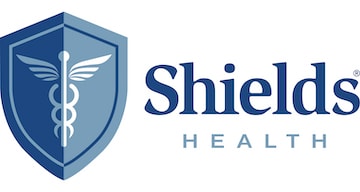‘A paradigm shift’: Dr. William Balcom on establishing one of Massachusetts’ 1st total knee replacement programs
Click here for the original Becker’s article
Note: Responses have been lightly edited for style and clarity.
Question: What was the process like, setting up your ASC’s total knee replacement program?
Dr. William Balcom: The first step involved sorting through the literature to determine appropriate patient selection. The first thing we looked at was selecting the patients properly and building a very specific program at the surgery center to support this kind of work because it’s a very different workflow. Our nurses, our anesthesiologists and our physical therapists have a very different role in the ASC than they do in a hospital setting. It took awhile to get all the stakeholders together and put together the program. But boy, is it really working out beautifully for the patients. We are so proud of our team.
Q: How long would you say it took to set up the program?
WB: It took around six months. I started doing outpatient knee replacements at the hospital quite awhile ago, and that’s a very different environment with more resources than an ASC. I started doing them at the surgery center about three months ago. It took a lot of contract negotiation with all the implant companies, and you have to contract, you have to negotiate with all the payers, the insurances, because they don’t have a payment code for this particular procedure, or they didn’t. Now many of them do. So it did require a lot of working with all the different stakeholders, the implant companies, insurance companies and that sort of thing. So it took me about nine months I’d say to get the whole program up and running where we could actually do the work.
Q: Have you seen an increase in patient interest for outpatient total knee replacement? Are patients really curious about it?
WB: So for a lot of patients, I’ve already replaced multiple joints, and their last experience was a night or two in the hospital, and that’s what their expectation is. A lot of the patients are excited they can get their joint replaced and go home that same day. Some patients are a bit anxious, and that’s where I think education and support is very helpful. If patients are healthy and motivated, an ASC is a wonderful environment to have surgery. It’s a much more intimate environment, and from start to finish, the procedure takes about four hours.
Q: Now that you have this program established, how are you hoping to grow it in the coming years?
WB: My approach to this program was that joint replacements are a high volume, very predictable procedure; we do many joint replacements. It was a good type of surgery to build the program on because we worked out the processes and the staff resources that were necessary. Once you can do that kind of high-acuity work in an ASC, it will significantly increase the kinds of procedures you can do in that environment.
Now that we’ve established this program, it’s going to allow us to add more spinal surgery there and maybe general surgical procedures more easily. It’s a real game changer. It’s an extraordinarily safe environment, the recovery is quicker, and the patient and family satisfaction is really through the roof. It’s a paradigm shift.
Q: Are there any headwinds you expect to face in the coming years?
WB: Not all insurers are on board with paying for outpatient total knee replacements, but I think that’s going to change over the next 12 to 18 months. With CMS’ decision to pay for outpatient total joints in the ASC setting, most of the commercial insurers are now following in line with that. So I think we’re at an interesting point right now, getting more payers and patients interested in the procedure. In just three months, I have patients who are coming in asking if they would be a good candidate for the surgery. It’s interesting to see patients embracing this as an option.
